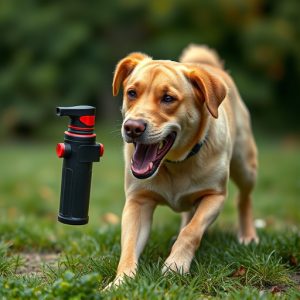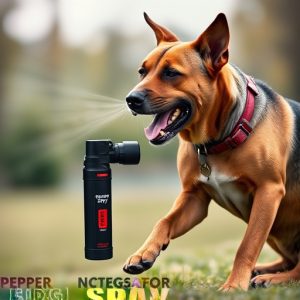Pet Safety & Self-Defense Spray: Navigating Legalities and Regulations
Postal workers facing potential pet-related threats must navigate complex Self Defense Spray Regulat…….
Postal workers facing potential pet-related threats must navigate complex Self Defense Spray Regulations. Using self-defense spray on animals is illegal and can result in animal cruelty charges. Prioritizing de-escalation techniques over non-lethal force, like dog spray containing capsaicin, is crucial. Regional laws vary widely; understanding local regulations is essential for compliance and pet safety. Consulting law enforcement or legal experts ensures protection without breaking the law.
In today’s diverse world, exploring unique self-defense options is essential for personal safety. One often overlooked yet powerful tool is self-defense spray, especially for postal workers facing potential threats. This article delves into the legalities and limitations of self-defense spray, offering a fresh perspective by examining its use with pets, specifically dogs. We navigate the complex landscape of regulations surrounding pet-friendly self-defense spray, providing insights for responsible ownership and usage.
- Understanding Self-Defense Spray: Legalities and Limitations
- Pets and Self-Defense: A Unique Perspective on Dog Spray
- Navigating Regulations: Owning and Using Pet-Friendly Self-Defense Spray
Understanding Self-Defense Spray: Legalities and Limitations
Self-defense spray, also known as pepper spray or mace, is a popular tool for personal safety. However, when a postal worker, tasked with delivering mail across diverse environments, decides to use it, especially on pets, several legal and ethical considerations come into play. These regulations vary significantly depending on the region, but generally, self-defense spray can only be used in situations where there is an imminent threat of physical harm.
Using self-defense spray on a pet, even if perceived as aggressive, can face strict penalties due to animal cruelty laws. Moreover, postal workers must prioritize de-escalation techniques and non-lethal force options before resorting to any form of spray. Understanding these Self Defense Spray Regulations is crucial for ensuring safety while respecting Pets’ welfare, especially in public spaces where both humans and animals coexist.
Pets and Self-Defense: A Unique Perspective on Dog Spray
In recent years, there has been an interesting shift in the way self-defense spray is perceived and utilized, particularly involving pets. Unlike traditional weapons, dog spray—a type of self-defense spray specifically designed for use against animals—is gaining traction as a unique tool for pet owners to protect themselves and their loved ones. This alternative approach to personal safety raises important questions about the role of pets in our lives and the evolving nature of self-defense strategies.
The concept of using dog spray, which typically contains capsaicin, is not without its regulations and considerations. As with any form of self-defense mechanism, there are legal implications and guidelines that pet owners must understand. Some regions have specific laws regarding the possession and use of self-defense spray, including those intended for pets. Additionally, responsible usage and storage practices are crucial to ensure the safety of both the owner and their animal companion, as well as bystanders. This unique perspective on self-defense highlights a growing trend where individuals explore creative solutions to protect themselves and their four-legged family members.
Navigating Regulations: Owning and Using Pet-Friendly Self-Defense Spray
Navigating the legal landscape surrounding self-defense spray can be a complex task, especially for postal workers who often encounter potentially dangerous situations. When it comes to pets, the rules become even more intricate. Many areas have specific regulations regarding the use of personal protection products, and allowing animals to carry or use such devices is typically prohibited. However, there are exceptions, particularly when it comes to service animals, which are trained to assist individuals with disabilities.
For postal workers considering a pet-friendly self-defense spray, understanding local and state laws is paramount. Some jurisdictions allow the use of non-lethal force for self-protection, but these rules often exclude animals due to concerns over animal welfare and potential harm to others. It’s crucial to consult with local law enforcement or legal experts to determine the specific guidelines in your area. This ensures that you remain compliant while also protecting yourself and your pet in unforeseen circumstances.
In conclusion, while self-defense spray presents an intriguing option for personal safety, especially for postal workers facing potential threats, understanding and adhering to local regulations regarding pets and such devices is paramount. With the right knowledge about self-defense spray regulations and its use in conjunction with pet ownership, individuals can protect themselves and their four-legged companions effectively.


